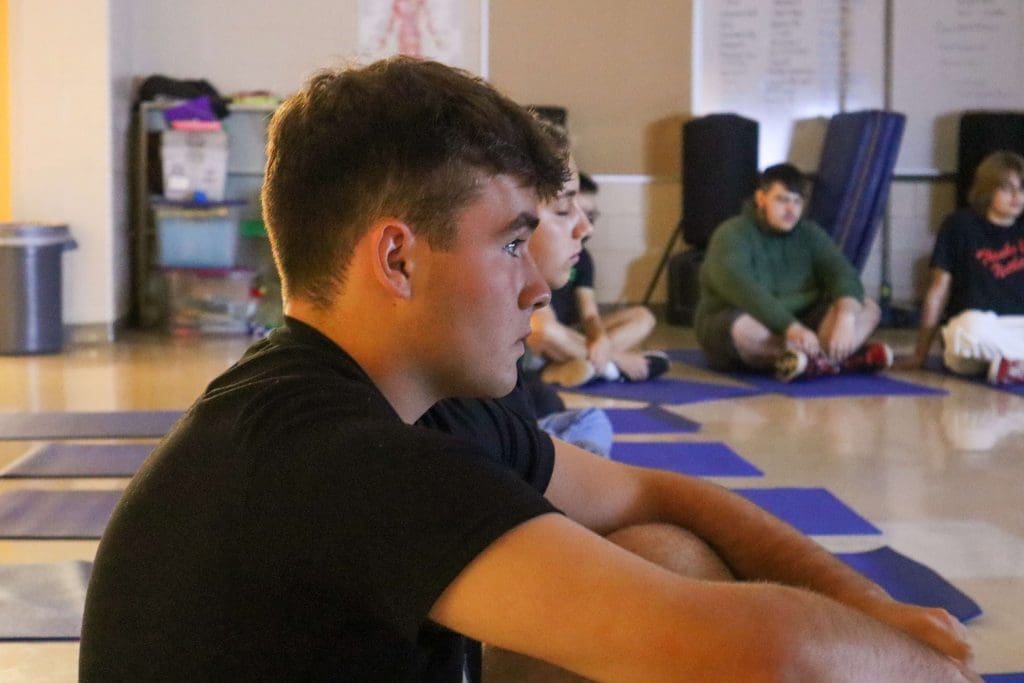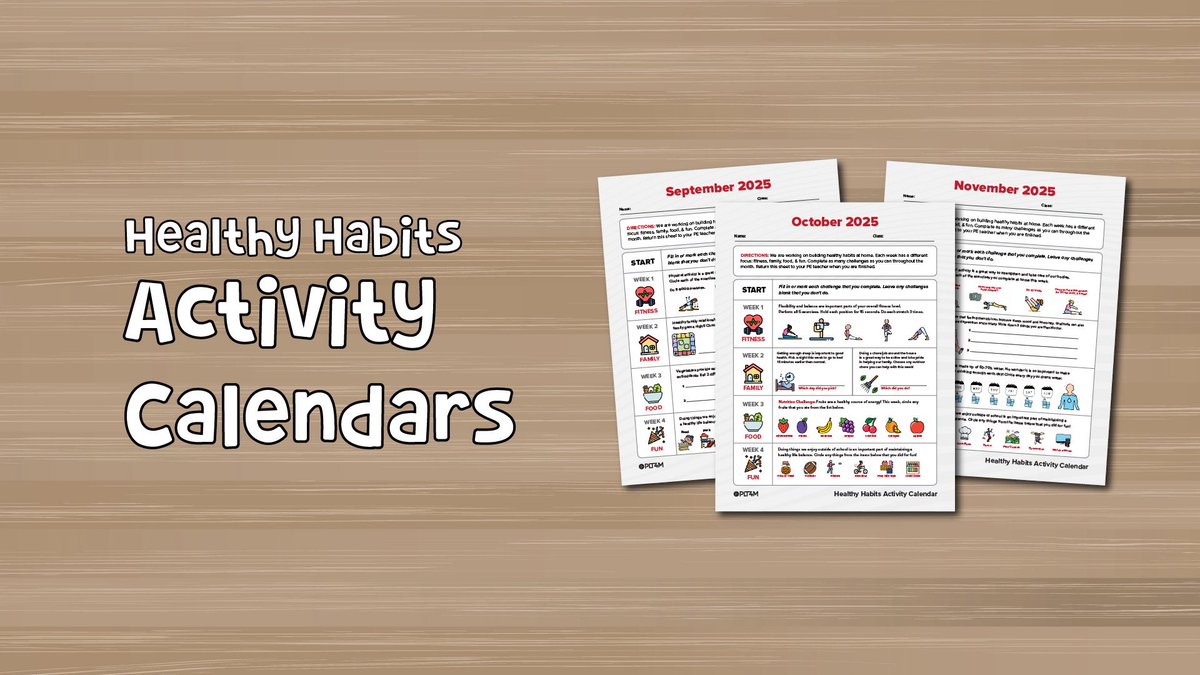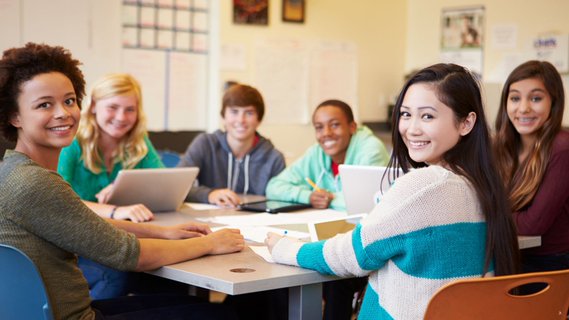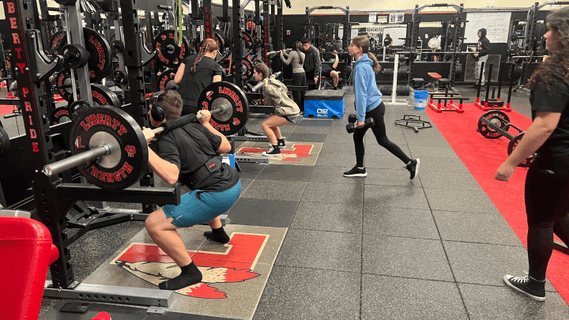Visualization is a powerful tool for people of all ages. We break down how to practice visualization meditation so that it can be an effective tool for people in daily life. Check out 3 free mindfulness practice sessions for students through guided visualization meditation. These offer students wonderful opportunities to explore mindfulness and guided meditation.
Benefits of Visualization Practice
We can intentionally use our minds and imagination to wire the neural networks in our brains. Visualization allows us to do this before we even take on a task.
Visualization is so powerful because our body, brain, and nervous system don’t know the difference between real life and our imagination. Therefore, if we can practice visualization meditation, then we have primed our body, brain, and nervous system to be ready for the real thing when it happens.
Through visualization practice, we can prepare for real life through positive thoughts. For example, if you have a daunting goal, visualization techniques can empower you to see the steps to achieve your specific goals. In even more immediate settings, visualization exercises can help you create a positive image about an upcoming test, performance, competition, or even social interaction.
We are using our thoughts to create these neural pathways to do this before we actually do them. We can imagine and picture ourselves doing great things through stillness and deep relaxation.
What Can We Use Visualization For?
Before we break down the HOW to practice visualization meditation, starting with the WHAT we can use visualization techniques for is important. This meditation technique can be used for almost anything in our everyday lives. A few examples of what to focus on during our visualization practice include:
An upcoming test or presentation
The big game or competition
A performance or special event
Social interactions or gatherings
You will notice that many topics listed above can cause psychological stress or negative emotions. But if we can teach how to practice visualization meditation, these become less daunting and more manageable in real life.
Below are 3 free guided sessions with PLT4M mindfulness instructor Meghan Leighton on how to practice visualization meditation.

How To Practice Visualization Meditation For Test-Taking
In this mindfulness practice, Meghan explores the steps to take our negative thoughts around a test and helps create a positive mental image around confidence and success.
In this session, we start by taking long, deep breaths to reach a relaxed state and comfortable position. From there, we work through the mental imagery of test-taking to focus our mind’s eye on the task at hand.
How To Practice Visualization Meditation For Music, Arts, and Sports
So much of our creative spaces and sports require some movement, but today, we will take a step back and be still through visualization.
The 10 (or more) Tabs In Our Brain: Have you ever had about 10 different things or tabs opened on your computer or phone? Suddenly, the juice or battery is dying faster and faster. So slowly, you close out tabs and widdle down to the one thing you need to focus on. Now you have space and time left to focus on that tab and get what needs to be done.
If you think of your brain like those 10 tabs, you can open up your mind for more space and allow room for creativity and focus by taking deep breaths and concentrating on just one thing.
If you think about it, we are trying to ‘multi-task’ much of our life and believe we are MORE productive. When in reality, when we are always racing to do the next thing or multiple things at one time, we kick into the fight or flight response. Suddenly, your brain, heart, and body are out of whack and panicking. This is no environment to focus on your creative space or sports practice, or competition.
Therefore, through visualization, we can equip ourselves with skills to be in the present moment and ready to achieve our goals. This longer lesson comes from our mindfulness lesson plans series.
How To Practice Visualization For Daily Interactions and Emotions
While we might think about visualization for those big life moments, visualization exercises can also equip us with the skills to handle even simple interactions and life events.
For example, we might be concerned about a friend or family member. Often, when we experience concern, we immediately want to “fix” the person or problem they are experiencing. But this may not help; in fact, it rarely does. Think about a time when someone told you to “calm down.” You probably just wanted to be listened to and comforted.
Through creative visualization, we can prepare ourselves to be better equipped to support others experiencing negative emotions. Check out this video that guides us on how to practice visualization meditation for when we are concerned about someone. This is a great addition to social emotional learning curriculum.
Key Takeaways On Visualization Meditation For Students
Guided meditation might seem intimidating for students. But there a wide variety of physical and mental health benefits to regular meditation practice.
Interested in checking out more guided visualization meditation practices? Reach out to PLT4M who has a full slate of videos and lesson on mindfulness, stress, and social emotional learning. Here you can go beyond just 3 lessons and make mindfulness and meditation an integral part of your curriculum.








